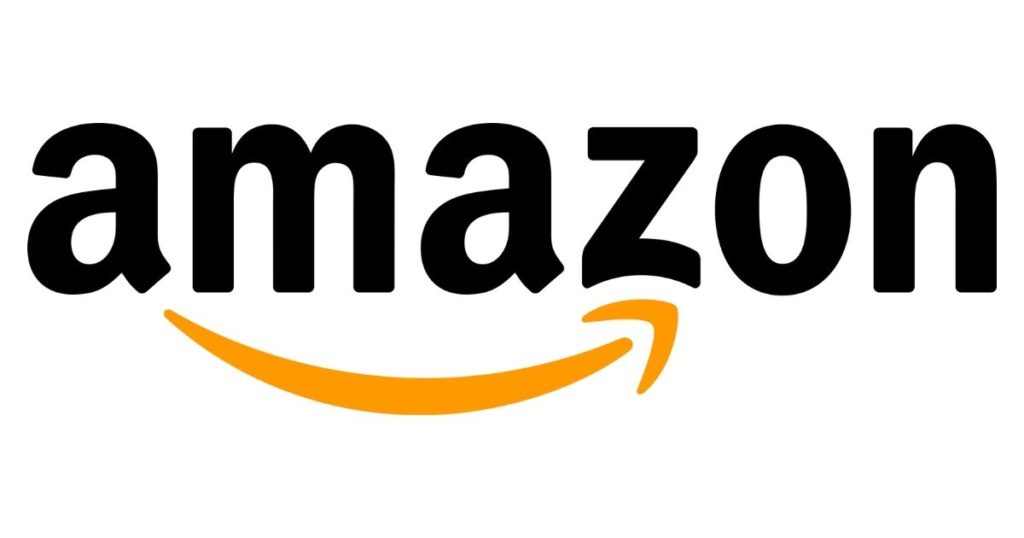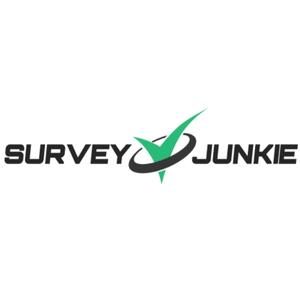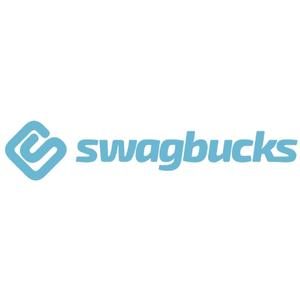Amazon is currently the world’s largest eCommerce platform and provides delivery services to most parts of Canada. Amazon.ca currently processes $9.8 billion in sales every year.
Chances are that you may already be an Amazon customer or a Prime member yourself.
If you’re reading this post now, though, you’re probably more interested in selling on Amazon. If so, then you’ve come to the right place.
Below, I’ll give you all of the basic information you need to start your first ecommerce store.
Then, I’ll give you a step-by-step guide and show you how to sell on Amazon in Canada. Get ready to enter the multi-billion-dollar world of Canadian eCommerce.
How Do I Start Selling On Amazon In Canada?

One of the reasons why Amazon has become so popular is that they make it just as easy for businesses to sell their products as they do for customers to buy products online.
To be completely upfront, you don’t even need a business license to get started. That being said, I definitely recommend that you get a business license if you’re serious about getting into eCommerce. I’ll delve more into that below, though.
Before we jump into my detailed how-to guide, here’s a quick breakdown of how to start selling on Amazon in Canada:
- Figure out what you want to sell.
- Create an Amazon seller account.
- List your item on Amazon.
- When it’s paid for, fulfill and ship the order.
- Receive your payment from Amazon.
It’s as simple as that. That’s why Amazon has over 9.7 million sellers worldwide.
Selling On Amazon Canada: Two Simple Business Models
When it comes to selling on Amazon, there are two simple approaches you can take to your business:
- Selling and fulfilling your own orders
- Order fulfillment by Amazon (FBA)
Below, I’ll give you a brief rundown of each of these business models and explain some of the pros and cons of each, so you can decide which is best for you.
1. Sell & Fulfill Your Own Orders

If you’re just getting started and you don’t have a lot of inventory, then you’ll most likely start by fulfilling your own orders on Amazon. This method is relatively simple:
- List your product on Amazon with some images, videos, and a description.
- Once a customer purchases the item, you’ll ship their order out.
- Amazon will deposit your payment every 7 to 14 days, depending on your account level.
- Rinse and repeat!
If you’re just getting started, then you’ll likely register with Amazon as an individual seller. Individual sellers are eligible to receive payouts for goods sold every 7 days.
Once you start moving higher volumes, though, you’ll want to register for an Amazon Seller Central account. This will give you access to more business tools that can help you grow your brand. However, professional sellers only receive payouts every 14 days from Amazon.
The main advantage of selling and fulfilling your own orders is that you get to keep all of your profits, after taxes, Amazon fees, and shipping costs come out of it. The main disadvantage is that you’ll also have to handle all of the shipping and handling, which can be a headache once your business starts to grow.
Additionally, if you’re fulfilling your own orders, your products won’t be Prime eligible, which means that some customers will lose interest once they find out they can’t get free two-day shipping (which is available for most Prime-eligible products fulfilled by Amazon).
Here’s a quick list of the pros and cons of fulfilling your own Amazon orders:
- You get to keep more of your profits
- You don’t have to pay storage fees to Amazon.
- It’s easier to keep track of your inventory.
- You have to handle shipping and handling costs.
- You may waste a lot of time going back and forth to your local shipping office.
- You are 100% liable for any lost or damaged products.
- Your products aren’t Prime-eligible, which means you can’t offer free two-day shipping to Prime members.
2. Order Fulfillment By Amazon (Amazon FBA Canada)

Your second option is to let Amazon fulfill your orders for you. This is known as Amazon FBA, and it’s become one of the most popular eCommerce business models in the world. It’s incredibly simple, easy, and hands-off, which allows you to run a full-fledged ecommerce store with little to no effort on your part.
All you need to do is supply the Amazon warehouse with your products. They’ll handle storage, shipping, handling, order processing, returns, and more.
Working with Amazon FBA also means that your products are Prime-eligible, which means you can offer two-day shipping to Prime members. This can really boost your sales.
Additionally, Amazon also assumes liability for your products. If any of your products are damaged or lost after they’re received into the Amazon warehouse, then they’ll replace it or compensate you for the value.
You can, quite literally, sit back and make money all day long with no effort on your part.
There’s just one catch – Amazon takes a larger cut out of your profits since they’re handling all of the hard work and storing your products. This is what Amazon calls its “referral fee,” and typically ranges between 8% and 20%, depending on the type of product you’re selling and its list price.
Overall, Amazon FBA is best for sellers who plan on moving a lot of volume and building a larger inventory. It’s also great for smaller sellers looking for a 100% hands-off ecommerce business.
Here’s a quick list of the pros and cons associated with starting Amazon FBA in Canada:
- Amazon receives and stores your inventory in climate-controlled warehouses.
- Amazon is 100% liable for damages or lost goods once they’re received by their warehouse.
- Your products are eligible for Prime’s two-day free shipping.
- Amazon handles all shipping, handling, and returns/replacements.
- Amazon will alert you whenever your inventory is getting low so you can supply them with more.
- You have to pay Amazon a referral fee that can range between 8% and 20% in exchange for their services.
- If your products aren’t selling, Amazon will begin charging you storage fees for inventory that sits in their warehouse for extended periods of time. This is referred to as “aged inventory storage fees,” and begins once your products have sat in the warehouse for longer than 271 days.
How To Start An Amazon Store In Canada: Step-by-Step
Now that you’re aware of the two approaches you can take to selling on Amazon in Canada, it’s time to get down to business. Here’s a step-by-step guide on how to start selling on Amazon.
Step 1: Register Your Company & Obtain Your Business License

This step is optional.
Technically speaking, you aren’t required to have a business license to sell on Amazon in Canada. If that’s what’s holding you back, then I recommend that you just dive right in and sell your first product.
It will show you how the platform works and give you some much-needed experience.
However, if you’re serious about starting an Amazon store and you plan on turning this into a reliable source of income, then I recommend that you treat it like a legitimate business.
First, register your company with the federal government. Then, you’ll need to obtain a business license from your province.
As a licensed business, you’ll be eligible for more tax breaks, and you’ll be able to write off some of your daily expenses as business costs.
If you ever plan on hiring employees to help manage your business, you’ll also need to have a registered business as well. All things considered, it’s just a smarter business move.
Here’s a detailed guide on how to register your business in Ontario. The process is similar in other provinces as well.
Step 2: Product Research

The first step to selling on Amazon in Canada is figuring out what you want to sell. If you manufacture your own goods, then that will be your product. However, most Amazon sellers purchase wholesale products from manufacturers and then resell them.
Some sellers purchase bulk or private-labelled products from wholesale websites like Alibaba.
Others find local Canadian warehouses selling brand-name products or buy pallets of auctioned products from stores and warehouses that are clearing out their inventory.
- Note: When purchasing bulk products from wholesalers, always verify the quality of the product before handing over your money. You can almost always request free or low-cost samples from manufacturers.
Whatever the case is, you’ll want to thoroughly research your product. Do some research and figure out what products are trendy, but try not to dive headfirst into an oversaturated market.
For instance, selling phone chargers is definitely oversaturated, whereas selling unique niche items like funny-shaped coffee mugs may be less competitive.
Some great tools for performing market/product research include:
These tools allow you to see behind-the-scenes data on Amazon trends, and give you a clear view of how competitive each product and category is. Investing in a good product research tool can save you thousands of dollars that you could waste by jumping into selling a random product.
Step 3: Register For Amazon FBA or Figure Out A Fulfillment Plan

With a product in mind, you’ll need to decide whether you want to use Amazon’s FBA program or fulfill your own orders. It’s important to figure this out before you place an order with the manufacturer.
If you’re using FBA, then you can get the manufacturer to ship your inventory directly to an Amazon warehouse, saving you time and additional shipping fees.
If you plan on fulfilling your own orders, make sure that you have somewhere safe where you can receive the package or pallet of goods. If your goods are perishable or sensitive to temperature, make sure you have a climate-controlled room, garage, or storage unit for your products.
Step 4: Create & Optimize Your Amazon Store

Once you figure out what you’re going to sell, you’ll need to create your online Amazon store. This is relatively straightforward and simple. You just need to enter some simple information about your brand, provide a brief bio, and start listing your products.
- Pro Tip: Having a logo for your business makes you look like a more trustworthy brand. You can get low-cost logos designed for you in less than 24 hours by hiring a freelancer from Fiverr.
If you’re still waiting for your products to arrive at the Amazon facility or your own storage unit, don’t activate the listings just yet. However, you can go ahead and create the pages for each listing so that they’re ready to go once your inventory is received.
Tips To Increase Your Amazon Sales
Now that we’ve covered all of the basics about how to sell on Amazon in Canada, here are some helpful tips that you can utilize to take your Amazon business to the next level.
1. Take Lots Of Product Pictures & Videos
The more pictures and videos of your products that you can post on the item’s page the better. Sometimes, the manufacturer may provide you with some stock photos that you can use. However, I also recommend adding some of your own for good measure.
2. Write Thorough Product Descriptions & Pages
Would you buy a product with no information?
Information is very important to Amazon customers, so make sure that you provide detailed information and product features on your product page.
Additionally, you may also want to work with a freelance graphic designer to create some visual charts and banners to display on the product page. All of this makes your product look more legitimate, trustworthy, and valuable.
3. Utilize Categories & Keywords
In addition to providing a detailed product description, it’s also a good idea to scatter some keywords throughout your product page.
Keywords are key search terms that Amazon customers use to search for products. For example, if you’re selling a minimalist wallet, some keywords might be:
- “Utilitarian wallet”
- “Modern wallet”
- “Compact wallet”
- “Business wallet”
- “Wallet for men”
Put yourself in your customers’ shoes and try to be creative here. You can also use some of the product research tools that I mentioned above to find good keywords for your products.
Additionally, make sure that your product is properly categorized using Amazon’s product categories.
4. Encourage Customers To Leave Reviews
Reviews are very important on Amazon, and it’s essential that you incentivize your customers to leave reviews.
One of the best ways to accomplish this is by adding a personalized note in each package you ship, talking about your brand, thanking the customer for their purchase, and giving them a QR code to scan so that they can leave a review for your product.
Another way to achieve this is by sending a follow-up message to the customer’s email address through Amazon.
If you’re just starting out, it may not be a bad idea to sell some of your items at low cost and use this as an incentive to get your first good reviews from customers.
5. Find Brand Affiliates
Influencer marketing is one of the best ways to promote a new product on Amazon. Amazon has an affiliate program that I’ve mentioned before. It allows anybody to recommend and provide links to Amazon products in exchange for a commission every time a product is sold.
Now, you could just hope that an affiliate marketer finds your product and decides to recommend it, or you could directly reach out to influencers explaining why they should recommend your product.
They’ll usually agree to help you sell your product in exchange for money, free samples, or both.
If you’re a new brand, I suggest reaching out to micro-influencers with less than 100,000 followers, as they’re far more affordable and have higher engagement than larger celebrities. They’re also willing to work with smaller start-up brands as well.
FAQs About Selling On Amazon In Canada
Last but not least, here are some quick answers to some of the most common questions I receive.
Is It Easy To Sell On Amazon In Canada?
If you’re new to eCommerce, selling on Amazon might seem like a lot of work. Once you learn the basics, though, it’s possible to create a fully automated online business with a relatively small amount of work!
This leaves you plenty of time to make extra money on the side, while enjoying profits from a successful Amazon business.
How Long Does It Take To Get Paid From Amazon FBA Canada?
Amazon typically pays FBA sellers every 14 days. After payment is disbursed, it can take up to 5 business days to arrive in your account.
Can I Resell Products On Amazon Canada?
Yes! A great side hustle is to resell used items that you find for cheap in thrift stores on Amazon.
Do You Need A Business License To Sell On Amazon Canada?
You don’t need a business license to sell on Amazon in Canada. However, it is recommended.
What Are The Best Products To Sell On Amazon Canada?
This is impossible to say, as the market is constantly changing. I recommend researching consumer trends and using a product research tool like the ones I mentioned above.
Does Amazon Canada Have Selling Fees?
Yes. Individual seller accounts are required to pay $1.49 per item sold, in addition to any other selling or referral fees. Professional seller accounts are required to pay a $29.99 subscription fee for the service, in addition to selling and referral fees. Here is Amazon’s full documentation of fees for Canadian sellers.
Conclusion – Should I Sell On Amazon In Canada?
Selling on Amazon in Canada can be an incredibly profitable business. Amazon FBA is an incredible resource that allows sellers to run fully automatic ecommerce stores with very little effort on their part.
Registering as a self-fulfilled seller is also an easy, low-cost way for beginners to get started.
Are you ready to start tapping into the massive stream of wealth on the internet?
If so, then keep on reading and check out my conclusive guide to making money online in Canada next!





